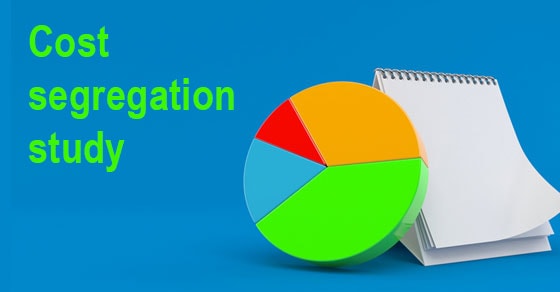Cost segregation is an IRS-recognized tax deferral strategy in which specific components of a building or improvement project are identified and classified as personal property or land improvements rather than as real property.
This results in a much faster depreciation write off since real property is depreciated over 27.5 or 39 years vs. personal property which depreciates over 5 or 7 years and land improvements which depreciate over 15 years. While you will need to recapture the depreciation when you sell the building, which could affect your taxable gain or loss, this is a great strategy for situations where the building project is significant and you plan on holding the property for the long-term. You gain the financial benefit of having the use of the tax deferral money during the holding period--the longer the holding period, the greater the time value of money benefit. To support the property classifications, you will need a cost segregation study done.
Accelerating depreciation is just the beginning. A cost segregation study will provide information useful in making decisions on whether an asset needs to be capitalized or can be expensed under the IRS Tangible Property Regulations. If the asset does have to be capitalized, the cost segregation report will support the immediate deduction of the asset it is replacing using Partial Asset Disposition Regulations.
Current legislation continues to enhance the value of the cost segregation study by supporting the use of favorable regulations for qualified improvement property, bonus depreciation, and many other favorable provisions. There has never been a better time to perform a cost segregation study.
Examples of properties that may benefit from a cost segregation study:
• Office buildings
• Warehouses
• Strip malls and retail stores
• Restaurants
• Airport facilities
• Apartment buildings
• Car dealerships
• Distribution centers
• Manufacturing facilities
• Golf courses and country clubs
• Grocery stores
• Hospitals
• Hotels and motels
• Medical / dental offices
• Nursing homes
What is eligible?
The benefits of cost segregation apply to new construction, renovation or acquisition of commercial or residential buildings. Eligible structures include:
• Buildings and facilities placed-in-service after December 31, 1986
• Renovations and additions completed after December 31, 1986
Even if your real estate project has been completed for several years, the IRS allows for recapture of the benefits from previous years. By reclassifying assets to their correct lives, entities can deduct a “catch-up” provision in the current year.
Cost Segregation Insights

November 16, 2023
A Cost Segregation Study May Cut Taxes and Boost Cash Flow
Is your business depreciating over 30 years the entire cost of constructing the building that houses your enterprise? If so,…

October 29, 2021
Get Your Piece Of The Depreciation Pie Now With A Cost Segregation Study
If your business is depreciating over a 30-year period the entire cost of constructing the building that houses your operation,…

Connect With A Specialist
Our construction and real estate accounting specialists have extensive experience in the field and are pleased to offer you personalized service. Contact us today to schedule a consultation.

